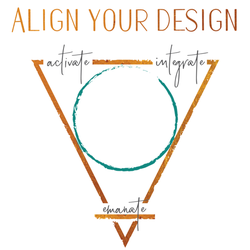Sometimes folks get confused about how the different Human Design/BG5 Types interact and get things done – especially in the workplace. In this baseball metaphor I’ll do my best to describe how the different types show up on the field of life – and work together to get things done.
For those of you familiar with Human Design, BG5 is the business application and the terminology is slightly different.
To begin, let’s introduce our key players, the Career Design Types. The list below includes the following for each type:
Human Design Type → BG5 Type
(Percentage of the population)
Aura
Strategy
Role
Key Indicators (Off track – misaligned/on track – aligned)
Manifestor → Innovator
(9%)
Repelling aura
Inform before you act
Initiate action
Anger/Peace
Generator → Classic Builder
(37%)
Open & enveloping aura
Wait to respond
Provide energy
Frustration/Satisfaction
Manifesting Generator → Express Builder
(33%)
Open & enveloping aura
Wait to respond
Provide energy
Frustration/Satisfaction
Projector →Advisor
(21%)
Focused & absorbing aura
Wait to be invited/acknowledged
Guide/advise others
Bitterness/Success
Reflector → Evaluator
(1%)
Sampling aura
Waiting a lunar cycle
Evaluate the whole
Disappointment/Surprise
In the following metaphor think about the game in terms of a few things:
- It’s not about the position specifically (in other words not all pitchers are Innovators)
- We are looking at the ENERGETIC expression and communication of the types; it’s less about the concrete game of baseball, and more about the dynamics both intra-personally for each player, and inter-personally between the types.
- For this example I’m not discerning between the Classic and Express Builder types, they are the majority of the population and therefore the majority on the field as well.

The Players:
The Innovator is like the pitcher. He starts the play by throwing the ball towards the batter (and catcher) both of which are the Builder types. The infielders and outfielders are also Builders. The coaches (both on the bench and near the first & third base) are Advisors, and our Umpire is the Evaluator.
How they play:
 The Innovator, once he is ready based on his own decision-making strategy (authority), throws the ball when it feels right (emotional clarity), or when he wants to (willpower), or when he intuitively knows it’s time (instinctive knowing).
The Innovator, once he is ready based on his own decision-making strategy (authority), throws the ball when it feels right (emotional clarity), or when he wants to (willpower), or when he intuitively knows it’s time (instinctive knowing).
He “informs” the other players of his intention to throw the ball through his stance on the pitcher’s mound and the nod he gives his catcher as they communicate through sign language about what pitch to throw.
He then initiates the action of the game and gives the batter (Builder) something to respond to. His aura is repelling, much like the ball that is coming at the batter.
When the Innovator (Pitcher) doesn’t wait until he’s really ready to throw his pitch, or when he’s not liking the suggestions from his catcher or coach (because he wants to do what he wants to do), he may find himself getting angry –maybe at himself or at others on the field. Trusting himself and his timing for initiating is essential to feeling a sense of peace within – and this peace greatly impacts his accuracy and effectiveness on the mound.
The Batter is a Builder (as are the infielders & outfielders):

The batter waits in an active and receptive stance (as do the catcher & the other players on the field).

The Batter / Builder waits…checking his gut (sacral authority) or feeling (emotional clarity) for the right time to hit the ball – for the “right” pitch that energetically feels like the one to smack out of the park. This may take a while, and being patient and waiting for the right pitch is essential. The perfect pitch may not come when he’s up to bat, or he might get struck out – both of which are frustrating, but not the end of the world (even though as the Builder he may feel as though “nothing” is happening for him) in reality, it’s not true.
The Builder has an aura that is always drawing “balls” and things to respond to towards him, so if he is wildly swinging at everything that comes his way (and in this day and age, there are things coming from ALL directions!) then he might miss the perfect pitch, the one intended just for him that will give him the greatest return on his energetic output (i.e., a home run).
Wildly swinging at anything and not truly waiting for the pitch that most deeply resonates with his sacral (or for some, emotional clarity) about which pitch “feels” right can cause a lot of frustration. This frustration is an indicator that the Builder is “off-base” (pun intended!) and needs to pause, regroup and get grounded in his sacral response again in order to respond to the pitch that feels “right” which brings a deep sense of satisfaction when the ball and bat connect and the ball soars into the outfield.
The in- and outfielders (also Builders) are all waiting in an active and receptive stance as well – ready to respond to whatever ball comes their way – whether that’s from the pitcher, or from another player on their team, and especially from the batter. The active and receptive stance is not just a physical action, it is all about energetic awareness and presence in the moment.
Some people think that “waiting to respond” is a passive activity, and the Builder is at the mercy of having to wait indefinitely. If you’ve ever watched kids play baseball you’ll know that the kids who are out there “picking daisies” and not paying attention or staying present to the game will often make mistakes and miss the ball when it comes their way – this also causes great frustration!
The Coach is the Advisor:
 The baseline coaches will often have lots of hand symbols they use to communicate with the batter, catcher, etc. And even the bench coach will head out to the pitcher’s mound to talk with the pitcher if things aren’t going well.
The baseline coaches will often have lots of hand symbols they use to communicate with the batter, catcher, etc. And even the bench coach will head out to the pitcher’s mound to talk with the pitcher if things aren’t going well.
The thing about the coaches is this: if the players don’t look to or listen to the coaches (i.e., acknowledge or invite them to give direction and feedback), they won’t receive the advice the coaches are giving. And since the coaches are watching the larger play and dynamic of the game (through their absorbing aura) vs. solely being focused on their own individual position in the moment (like the players) the players will miss out on the opportunity to improve or make necessary changes to be successful – both individually and as a whole team.
The Advisor (Coach) will use their instinctive knowing, emotional clarity, willful determination, mental reflection or inner knowing (the last two determined by what they hear themselves say), to make decisions about how to coach their players. They have the most diverse range of decision-making strategies of all the types, and can get derailed by the energy of the game or the lack of acknowledgement from their players (among other things). This can cause bitterness, and perhaps even the emotional blow-ups that happen between the coaches and umpire when things aren’t going well or their recommendations aren’t recognized!
When the coach is acknowledged, seen, and even invited to impart their wisdom and big-picture view, they feel a deep sense of success and purpose. This internal sense of success is what allows them to be clear guides for others and give advice & coaching that brings out the best in all the players on the field.
 The Umpire, or Evaluator, is gauging the entirety of the game – the fairness of play: which ultimately includes the energy and dynamics between the players, the coaches, and how everyone is doing on the field. They “sample” the energy and make calls based on what they see, feel, and perceive at the energetic level.
The Umpire, or Evaluator, is gauging the entirety of the game – the fairness of play: which ultimately includes the energy and dynamics between the players, the coaches, and how everyone is doing on the field. They “sample” the energy and make calls based on what they see, feel, and perceive at the energetic level.
While the baseball Umpire has to make calls immediately on the field, the Evaluator best does this for himself over time (28-30 days following the lunar cycle). One might say it takes him several innings to have a real sense for how the game is going, and what call (choice/decision) to make about his own personal life.
When the Evaluator/Umpire is on the field and taking in (sampling) the energy of all the other players and the environment during the game, he’s very susceptible to being conditioned or influenced by the players, coaches, and fans. That said, in a healthy state he can walk off the field, go out to nature or be by himself for a while and release that conditioning more easily than others.
Having clear boundaries and conscious awareness of what’s really going on during the game will help him not be overwhelmed by others or feel disappointed in the way the game is going but rather feel a sense of surprise and wonder at the excitement and flow of it all.
The Fans in the stands:
The fans could be thought of as the ancestral, social, cultural, and collective emotional & mental conditioning that happens around the players all the time. It’s the “white noise” that can either support them (through cheering) or bring them down (through booing), or distract them while they are on the field.
We can think of the fans and the other members of the team or organization as the tribe.
Helping the individual players recognize their own inner authority (truth), skills, and unique gifts, and supporting them in expressing this truth and genius is part of the process of moving from a highly conditioned-and “prescribed” way of acting that keeps the individual “fitting in” (tribal paradigm) to a richer more purposeful and productive way of living and working.
This is a paradigm where the individual is allowed to bring all of him or herself to the game and is celebrated for it. They feel on purpose, and are way more engaged and effective when on the field.
BG5 Career Design Analysis provides a framework for deeply understanding the mechanics of the game of life and an individual’s role in it-personally and in relationship to others. When an individual understands their unique role (through their type, aura, and decision-making strategy) and they understand how they operate optimally based on their own design they begin to interact with and relate to the other types on the field in a synergistic way. The game flows and magic occurs as their innate strengths & gifts are released through play.
For you:
Based on your Career Design Type, imagine yourself on the field described above. If you know how others on your work team operate (i.e., their Career Designs) imagine them on the field with you. How does that change the way you perceive yourself and others in the game of life & work?
You may feel as though the game you’ve been playing has lasted for-e-ver! (Baseball sometimes feels that way). It’s never too late to re-assess your game and take a seventh inning stretch so to speak. Get familiar with your Career Design and how you best operate. You may or may not hit a home run right away, but chances that you will greatly increase and the game will certainly be a lot more fun!
Kris Prochaska, MA
Align Your Design, LLC



